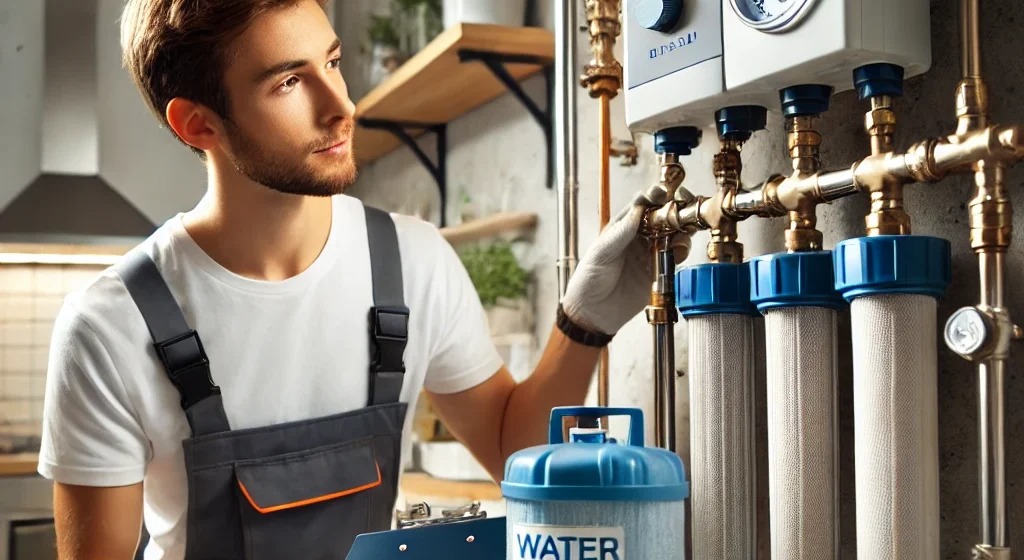Plumbing is one of the most foundational yet overlooked components in residential and commercial structures. It is so deeply embedded into everyday life that we rarely think about it until something goes wrong—a dripping faucet, a clogged drain, or a burst pipe. However, the planning, design, and maintenance of water systems require detailed technical knowledge, experience, and a proactive approach to ensure functionality, hygiene, and safety.
This article will explore the full scope of water systems in buildings, the common challenges associated with them, and the wide array of solutions available to property owners. Whether you’re building a new home, remodeling an older property, or simply maintaining your current system, having a deeper understanding of this hidden infrastructure can save time, money, and stress in the long run.
The Evolution of Indoor Water Systems
Indoor plumbing has come a long way since its ancient origins. Early civilizations like the Romans created aqueducts and sewage systems that laid the foundation for modern infrastructure. Today’s systems are more complex and efficient, but the principles remain similar: deliver clean water in, remove waste water out.
Modern designs incorporate advanced materials, computerized diagnostics, energy-efficient components, and water-saving fixtures. As construction practices evolve, so too does the demand for smarter, more sustainable solutions.
This evolution is particularly important in an era where water conservation is critical, infrastructure is aging, and technology is reshaping how we interact with our living spaces. From tankless water heaters to smart leak detectors, modern innovations have transformed how we manage our water usage.
Components of a Water System
A fully functioning residential or commercial water system is a combination of many individual components, each with a specific role. These parts must work in unison to provide safe, clean water and remove waste without interruption.
1. Supply Lines
These bring clean, potable water from a public utility or private well into the building. They are typically made of copper, PEX, or PVC, depending on local codes and preferences.
2. Fixtures
Sinks, toilets, showers, bathtubs, dishwashers, and washing machines all connect to the water system and are the most visible components to users.
3. Drain-Waste-Vent (DWV) System
This system removes wastewater from the building and vents sewer gases to the outside. Proper design and maintenance of the DWV system are crucial for sanitation and odor control.
4. Water Heating
Water heaters—either tank-style or tankless—are essential for providing hot water for hygiene and comfort. These systems must be sized properly for the building’s needs and regularly maintained for efficiency.
5. Valves and Shutoffs
Control valves allow users to isolate sections of the system for repair or emergency purposes. These must be accessible and labeled for quick action.
6. Backflow Prevention
These devices prevent contaminated water from re-entering the clean water supply. They are essential in areas where cross-contamination is a risk.
Each component must be properly installed, tested, and maintained to ensure safe and efficient operation.
Common Problems and Their Underlying Causes
Despite advances in materials and technology, problems with water systems are still common. These issues can range from minor inconveniences to major structural threats. Understanding their root causes is key to long-term resolution.
1. Leaks and Drips
These can result from corroded pipes, loose fittings, or worn-out seals. Even a slow drip can waste hundreds of gallons of water over time and lead to mold or damage to structural materials.
2. Low Water Pressure
Often caused by mineral buildup, partially closed valves, or pipe corrosion, low pressure can make basic tasks like showering or washing dishes frustrating.
3. Clogs
Grease, hair, food waste, and non-flushable materials are common culprits. Regular maintenance and proper usage can minimize blockages in sinks, toilets, and drains.
4. Water Heater Issues
Sediment buildup, faulty thermostats, and deteriorated anode rods are frequent causes of hot water problems. Neglected heaters become less efficient and more prone to failure.
5. Sewer Backups
These occur when blockages or breaks in the main sewer line prevent waste from leaving the property. The result can be unpleasant and hazardous, often requiring immediate professional attention.
Regular inspections and timely maintenance can prevent these issues from becoming costly disasters.
The Value of Professional Expertise
While many small issues can be resolved with basic DIY knowledge, the complexity of modern systems often requires professional input. Licensed professionals bring experience, tools, and code knowledge that ensure every component functions properly.
One of the most valuable aspects of working with professionals is the access to diagnostic equipment. From video camera inspections inside sewer lines to thermal imaging that detects hidden leaks, modern tools can pinpoint issues with minimal disruption.
Additionally, professionals provide peace of mind that installations meet building codes and regulations, which is essential for insurance claims, home resale, and safety compliance. Hiring qualified help for system planning, repairs, and upgrades is often the most cost-effective approach long term.
Engaging in regular plumbing services not only resolves problems as they arise but also includes preventive care, ensuring that small issues don’t escalate into large, expensive ones.
Preventive Maintenance for Long-Term Reliability
The best strategy for managing water systems is to prevent problems before they occur. Routine maintenance can extend the lifespan of pipes, appliances, and fixtures while avoiding emergency repairs.
Key Preventive Tasks:
- Inspect visible pipes for signs of corrosion, leaks, or wear
- Test water pressure regularly to identify hidden issues
- Flush water heaters annually to remove sediment
- Use strainers in sinks to prevent clogs
- Avoid chemical drain cleaners, which can corrode pipes
- Schedule professional inspections of sewer lines and backflow preventers
A maintenance schedule helps identify vulnerabilities early, improving system reliability and reducing overall costs. It’s an investment in the longevity and safety of the property.
Efficiency and Sustainability in Modern Systems
Efficiency is no longer a luxury—it’s a necessity. With water rates increasing and environmental concerns mounting, homeowners and property managers are seeking solutions that reduce waste and improve performance.
Water-Saving Upgrades Include:
- Low-flow showerheads and faucets
- Dual-flush or high-efficiency toilets
- Tankless water heaters
- Smart leak detectors and automatic shutoff valves
- Greywater recycling systems
These upgrades not only save money but also reduce environmental impact. Many municipalities offer rebates or incentives for installing water-efficient devices, making these improvements even more appealing.
Sustainable solutions are not only about conservation but also about resilience—ensuring that homes and buildings can operate efficiently and safely, even under stress.
Emergency Preparedness and System Resilience
No matter how well-maintained a system is, emergencies can still occur. Quick access to shutoff valves, knowledge of the system layout, and a plan for emergencies can make a significant difference in minimizing damage.
Emergency Preparedness Tips:
- Know where your main water shutoff is located
- Label all shutoff valves clearly
- Keep a basic tool kit with wrenches and pipe tape
- Store the contact information of emergency professionals
- Install battery backup for sump pumps in flood-prone areas
Building resilience into a system means planning for worst-case scenarios. Fast response times and quick thinking can reduce water damage and speed up the repair process.
This is another area where regular plumbing services add value—professionals can guide homeowners on how to prepare and respond effectively during emergencies.
Upgrading Old Systems: When and Why
Older homes often contain outdated systems made from materials no longer considered safe or efficient. Galvanized steel, for example, corrodes over time and can introduce rust into the water supply. Lead pipes, now banned in most regions, pose serious health risks.
Signs that an upgrade may be needed include:
- Discolored water
- Frequent leaks
- Low pressure
- Strange odors or tastes
- Constant clogging or backups
Re-piping a home or replacing aging water heaters may seem like a major investment, but doing so can increase property value, improve safety, and eliminate recurring problems. Upgrades often pay for themselves in energy savings and reduced repair costs over time.
Professional providers of Wet Basement Solutions can perform detailed assessments and provide guidance on prioritizing repairs or replacements.
Conclusion: Building Confidence Through Reliable Infrastructure
Water is a daily necessity. From the moment we wake up to brush our teeth to the time we wash dishes at night, we rely on an intricate system of pipes, valves, and fixtures to make our lives easier. Yet, it’s easy to forget just how much we depend on these systems—until something goes wrong.
Taking a proactive approach to water system management means more than avoiding emergencies. It’s about improving comfort, efficiency, safety, and even the value of your property. Whether you’re a homeowner, property manager, or investor, working with knowledgeable professionals, staying informed about your system, and scheduling regular care can make all the difference.
Smart, sustainable, and well-maintained infrastructure is no longer a luxury—it’s a necessity. By investing in high-quality plumbing services, you not only protect your property but also enhance your daily living experience for years to come.








